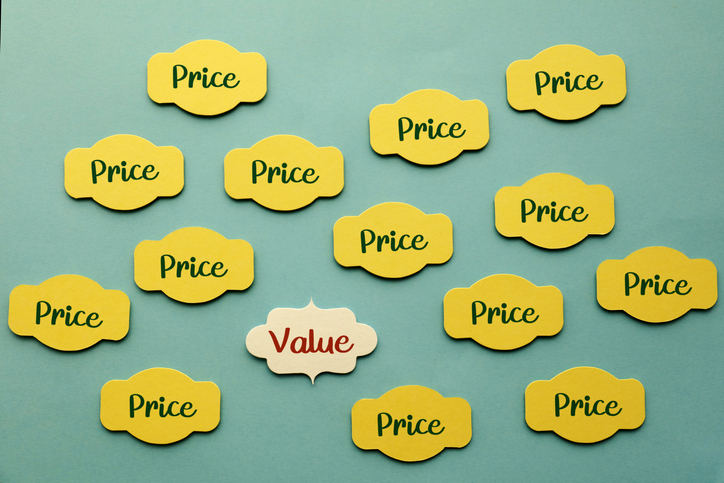I sometimes get questions regarding how to price products and services. That always reminds me of someone asking their accountant if something is possible and they reply, “It depends.” If you’re asking me how long a piece of string might be without showing it to me, how am I going to give you the right answer?

Jokes aside, the success of a project rarely hinges on price. It hinges on why your prospect would want to do the project in the first place. Those reasons make price less interesting and less of a conversation point. If they’re aware of what a product or service could do for them, it will become a priority. One of the books in our business library explores this in depth: Escaping The Price-Driven Sale, which features a study on hundreds and hundreds of business transactions and what ultimately got the “yes.” They discovered that value trumped cost just about every time.
Think about it this way. If a vendor approached you with a lot of insight and unanticipated solutions to your problems, is your first thought going to be about price? What if they offered a new way to create value for your company or create a financial windfall for your organization? Would you be focused on the price?
Here are a couple of other things I’ve learned about pricing over five different careers. Frankly, if you don't have at least 10% of your customers complaining about how expensive you are, your prices aren’t high enough. When I started consulting, I charged $140 an hour, but my girlfriend at the time pointed out that her accountant charged her $225 an hour and was incompetent in comparison to my track record. So, I raised my rates to $200 an hour. And you know what happened? No one complained. Here’s why: you’re bringing a particular expertise to their situation and saving them hours of working it out your own. Once again, value trumps price.
There’s anecdotal evidence of this in various segments as well. Years ago there was a vendor who approached a Canadian company for a compressed air retrofit, telling them that if they did a little pressure testing and made a few tweaks, they would have a more efficient plant and equipment that was more quiet and reliable. His internal champion was able to get the project approved without mentioning price or even energy savings. It turned out that their factory was having unanticipated shutdowns and had to clean out their machinery of partially completed product because the compressed air system couldn’t maintain the proper pressure. The retrofit was a shortcut to fixing this problem, cutting down on maintenance and upping productivity. That was what mattered to them the most. The cost of the solution paled in comparison to the additional value it provided.
Lastly, a few years ago Seth Godin wrote a blog on the hierarchy of needs for non-business owners and what motivates those decision makers to take on a project. They are as follows:
- Avoid risk
- Avoid hassle
- Gaining praise
- Gaining power
- Having fun
- Making a profit
As you can see, money is the last motivator on the list! So, if you approach your prospect with only price in mind, you may have already lost the game. There are other factors you need to address in order to get their attention. If you remain focused on how you can bring value into the situation, then you most likely won’t have to address price at all.







